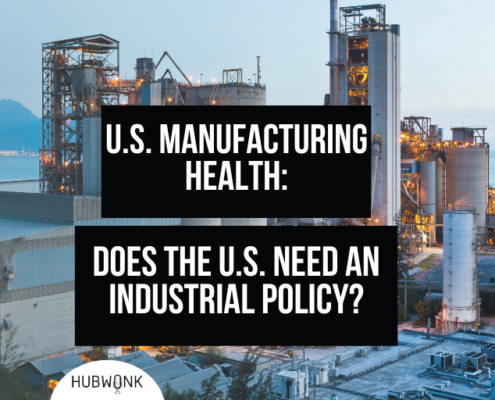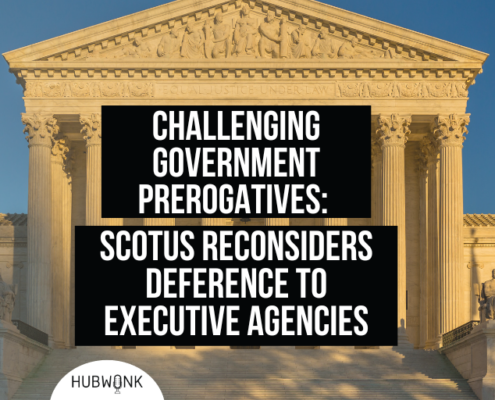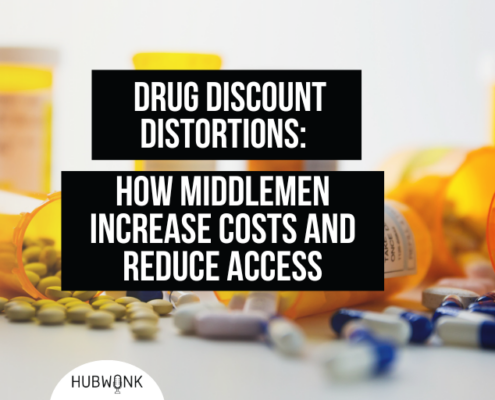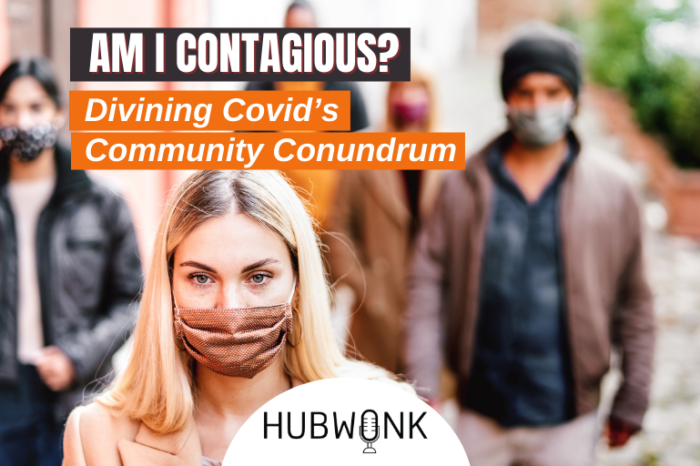Am I Contagious? Divining Covid’s Community Conundrum
/in COVID Health, COVID Life Sciences, COVID Podcasts, Featured, Healthcare, Podcast Hubwonk, rCOVID /by Editorial StaffHubwonk host Joe Selvaggi talks with Alva10 CEO and precision medicine expert Hannah Mamuszka about which tests are best for determining who is contagious and the implications for the CDC’s new isolation recommendations.
Guest:
 Hannah Mamuszka is Founder & CEO of ALVA10, a healthcare technology firm. Hannah has spent her 20+ year career in diagnostics – both in pharma and at diagnostics companies, in the lab and on the business side. She believes that the challenges of diagnostic technology fully impacting patient care are more commercial than technical, and conceived of ALVA10 to create a mechanism to pull technology into healthcare by aligning incentives through data. She regularly speaks on issues regarding advancement of technology in healthcare, is on the Board of Directors for two diagnostic companies and writes a column on the value of diagnostics for the Journal of Precision Medicine.
Hannah Mamuszka is Founder & CEO of ALVA10, a healthcare technology firm. Hannah has spent her 20+ year career in diagnostics – both in pharma and at diagnostics companies, in the lab and on the business side. She believes that the challenges of diagnostic technology fully impacting patient care are more commercial than technical, and conceived of ALVA10 to create a mechanism to pull technology into healthcare by aligning incentives through data. She regularly speaks on issues regarding advancement of technology in healthcare, is on the Board of Directors for two diagnostic companies and writes a column on the value of diagnostics for the Journal of Precision Medicine.
Get new episodes of Hubwonk in your inbox!
Read a Transcript of This Episode
Please excuse typos.
Joe Selvaggi:
This is Hubwonk. I’m Joe Selvaggi.
Joe Selvaggi:
Welcome to Hubwonk, a podcast of Pioneer Institute, a think tank in Boston. Two years after identifying the COVID 19 virus, the public and our policy makers are still struggling to understand who and for how long a COVID patient must isolate a recent CDC recommendation of five days of isolation before returning to daily routines with no additional COVID tests seems to ignore both the reality that the disease behaves differently in each individual and the power of a simple to, to deem someone safe to leave isolation. If our goal is to reduce the spread of COVID, could we better use the tests available to ensure those who are contagious remain in isolation? My guest today is Hannah Mamuszka, CEO of Alva 10 and precision medicine expert. As an advocate of precision medicine, Hannah has been a clear voice in explaining the value of abundant, accurate tests that indicate who is contagious. And when panel will explain the reasons for confusion around testing, which tests are for which purpose and what our listeners can do with the results to better ensure their own safety and the safety of their community. When I return our I’ll be joined by precision medicine expert Hannah Mamuszka.
Joe Selvaggi:
Okay. We’re back. This is Hubwonk I’m Joe Selvaggi, and I’m now joined by Alva10 CEO and precision medicine expert Hannah. Mamuszka. Welcome back to Hubwonk, Hannah.
Hannah Mamuszka:
Thank you so much for having me, Joe.
Joe Selvaggi:
Well, it’s great to have you, and now we’re now coming up on, unfortunately, the second year of this COVID 19 pandemic or endemic as it’s being called. Now I’d like to talk about how to mitigate risks, how to test perhaps what best path to go if we test positive, but let’s start at the very beginning. You have been a guest on the show in the past. This is a virus that started in we call COVID 19, cuz it started in 2019 and originated in Wuhan China. We’re now with a few new variants down the road. How different, how is this virus emerged and these variants, how much different is the newest variant from the original?
Hannah Mamuszka:
Well, this variant is really interesting. It has a lot of mutations in it, which is not uncommon for viruses, viruses, mutate all the time. They mutate basically every time they replicate. So they replicate millions of times a day. So it’s not surprising that we’re seeing the different variants with a lot of mutations, but the, the <inaudible> variant is pretty unique in the number of mutations it has. And for reasons that we don’t yet quite understand the mutations have caused it to be able to be more transmissible more quickly, which essentially means that it takes fewer copies of the virus for you to have in your body for you to start transmitting the virus to other people. Fortunately the structure of the virus and the proteins on the outside of the virus are still basically the same, which is good because it means that the vaccine are still very effective. And the diagnostic tests that we have both PCR and antigens still work quite well to detect the virus. A function of the diagnostic testing of course is how much virus do you actually have. And I think that’s really the part that has changed with is that it, you start having symptoms with a much lower amount, a virus than in previous, in previous variance.
Joe Selvaggi:
Now you’re an expert in precision medicine. I’m gonna ask you this question outta the blue. Is there any way I, I know that I take PCR tests and antigen tests. I have no idea which variant I might have. I’ve always been negative, but how would I know and how do I, my fellow citizens in a, in a population, how do we know which variant have, and which is in our population?
Hannah Mamuszka:
So this is being studied more at the population health level within certain cities and certain states. You know, candidly, we in the us have not done a great job of this. Most of the health systems in other parts of the world have done a much better job of continuously studying for mutations in different variants. Our current PCR tests though, are able to distinguish between Aron and Delta and some of the other variants. Most of this work though is being done using deep sequencing to really tell both what the prevalence of the different variants is in a population and also to really track for new variants to see if any that are popping up that are gonna be problematic either now or in the coming months.
Joe Selvaggi:
So scientists take let’s say somewhat random samples and, and use that to infer from that the population spread in which, which variants we have. Right. so as these variants have emerge, you’ve already answered my question, but we’re still confident that the vaccines that for our listeners who know, who listen, follow the show, we are strongly in favor of getting all the vaccines and your booster, but are these new variants, particularly Omicron are are the vaccines still effective in both preventing to some degree and reducing the symptoms and risks of OFN?
Hannah Mamuszka:
Absolutely. I mean, the, these vaccines are, these vaccines are amazing. We are truly lucky to be living in a time where vaccines that are, this efficacious can be developed and deployed in the way that they’ve been. I think there’s a, we have to kind of go back to remember how viruses work in order to think about what is actually happening and what does it mean for a vaccine to be working versus not working. So when you get exposed to a virus, what the virus needs to do is it needs to get into your cells to infect them because viruses can’t divide on their own. They’re not bacteria, they’re not fungi. They need a host to find, and you’re the host that they wanna find. So they want to find a way to get into your cells, to replicate. And if you haven’t been exposed to a pathogen before you’d be considered naive and the virus would potentially have a chance to really start replicating very rapidly before your immune system recognizes that it is a foreign agent and it needs to be removed.
Hannah Mamuszka:
The removal of those foreign agents are when you have symptoms. That’s when you develop a fever because pathogens generally don’t like high temperatures. So your body tends to try to cook it out. You may develop mucus, which is your way of your body, trying to excrete pathogens out of your body. Those are the symptoms that you feel when you have a vaccine, when you you’ve been vaccinated against something, your body already knows what the pathogen looks like. So even with Aron, which is generating symptoms in patients a lot quicker than the earlier versions, your immune system is much more ready than it would’ve been. And what this is preventing is patients from developing most patients from developing long, more serious symptoms from ending up in the ICU as a result of those symptoms. And that is, that is incredibly important for where we are with how many patients are getting Aron right now.
Joe Selvaggi:
So I want the, if, if we, if our listeners take nothing away from our conversation, I want it to be that they better understand the concept of test testing. I, I come to this question because as much as an advocate as we are, certainly you are of testing. I’ve had people say, look you know, I’ve heard this whole testing spiel, you know, it doesn’t help me at all. So if, if we take nothing away, I wanna make sure our listeners understand the difference in tests, what they’re useful for what they detect and when they should be taking them. So let’s start at the, the beginning. You mentioned at the top of the show, the, the two tests, the PCR, which is looking for antibodies and the rapid flow lateral flow tests which are looking for antigens, let’s start at the beginning because I think most people are familiar with PCR. Those are the things we lined up in traffic and got our nose swab and got a result two days later. What is that detecting? And in our bodies.
Hannah Mamuszka:
Sure. So one site correction PCR is actually detecting the genetic material of the test. So PCR tests, <laugh>, they’re all amplified tests. So you’re basically taking a really small amount of material and replicating it a number of times like thousands and thousands of times, until you have enough to determine if it’s actually present and are not the laboratory PCR tests that you go and you wait in line for, and then they take, you know, a couple days to get the results back to you are the most sensitive tests. They are detecting very, very small amounts of viral particles in your body. Detecting those viral particles, though. Doesn’t really tell you if you’re actually infectious or not. You could be infectious. You could it be prefect, which is a very small period of time when you’ve been exposed to a virus, but you maybe haven’t started to show symptoms, or most likely you could be post-infectious the post-infectious period is the period of time after your symptoms are resolved when you’re no longer contagious, but when you would be positive by PCR, and you’d be positive by PCR because the PCR machines are so sensitive that it can still detect the little bits of viral fragments that are gonna be found within your body.
Hannah Mamuszka:
And that is interesting from an academic perspective, but it’s not particularly helpful. It doesn’t tell you if you should be able to go to work. It doesn’t help tell you if you’re infectious or not. It’s interesting. And it’s definitely something that we should be tracking, cuz we wanna understand the prevalence of COVID within our, within our populations, but it’s not particularly helpful. There’s there are also the rapid PCR test, which is a PCR that you can get at maybe your local pharmacy, where you go in and you get a phone call in a couple of hours. Those use a technology called lamp. It’s a bit less sensitive than the lab PCR tests. It’s still PCR in that. It still amplifies the signal. So you still have the question of, is there actually enough virus in here for me to be, and then the last type of tests that I think everyone is trying to find online, trying to find on, you know, walmart.com are the antigen tests.
Hannah Mamuszka:
And those are the tests that actually detect the viral protein. And what’s different from the PCR tests. And the antigen tests is that PCR tests are amplified. Whereas antigen tests are not. So you have to have a fairly substantial amount of virus in the sample for an antigen test to be positive. And that positivity on an antigen test directly correlates with you being contagious. And that I think is really the question that we wanna know, are you contagious today? Can you go to school? Can you go to work? You travel, can you go see a show? And those are the most important questions that we need to answer because we really want the people who are contagious to stay home and isolate and try not to infect anyone else. Whereas the people who may have had COVID two months ago, but are still PCR positive, we don’t wanna keep those people out of school and out of work.
Joe Selvaggi:
So I think what you said is pure gold, and I want to emphasize and repeat what, you know, the, the important parts were I to say, for instance, be able to have the luxury of having a PCR test every day of my life. And I get exposed to COVID and that PCR test will from the moment I, my body recognize the COVID through the process of being sick and very contagious post COVID. I’m no longer contagious, but I’m recovered. I feel great. For months afterwards, my PCR test would test positive. And therefore it doesn’t differentiate between those, the phase of the disease where I can infect others. And that phase where you know, it’s more or less benign. My body’s gotten past it. That’s the PCR test and that rightly doesn’t give us much useful information actionable information by contrast the antigen tests lateral flow tests, the one that we’ve been giving out in Boston for, for free really, or that we can get at CVS that’s telling us the real valuable information. That’s saying you are contagious to others at this moment. And if it tests positive, you had better isolate and, and not participate. And until it tests negative, you ought to remain in isolation. Do I have that about right?
Hannah Mamuszka:
Yeah, absolutely. And I think a lot of us in the diagnostics industry have been calling for are better access, particularly for the antigen tests for months, frankly, almost years, because that is really the information that we want. You know, you can be PCR positive and never be contagious. You can never be you may never have symptoms. So we know part of the problem with COVID is that a lot of people haven’t realized when they have add the virus, they may have had it already, but being, knowing if you’re contagious, knowing if you are able to infect others is really the key to stopping the spread.
Joe Selvaggi:
So what puzzles me and we’re, you know, this is a moment in time. We’ve just had a, a CDC recommendation handed down that that says, look, if you do test positive and I’m assuming they, they mean antigen tests that you should isolate for five days and then go back to your your life. We know that, or we should know that COVID is contagious for, you know, in the ballpark of five days for the average person, but it can be less or more. Does that seem wise does send someone back merely because five days have have passed since their positive test, or might it be wiser to suggest that in addition to waiting five days, look for a negative antigen test.
Hannah Mamuszka:
Yeah, I, this is a recommendation that I, I really don’t understand because the average is five days, but that means that that’s in the middle. You know, a lot of people are not contagious at day three, and a lot of people are pages at day eight. And so when you pick a day, when you pick day five and say, as long as your symptoms are resolving, you can go back to work or you can go back to school symptoms and being contagious are not actually connected. The symptoms that you have are a reflection of what your immune system is doing and your immune system’s ability to clear the virus, your body that is actually distinct from the amount of virus you have in your body, which is related to how contagious you are. And that’s what the antigen tests pick up. And I’m really hoping that there will be additional guidance that comes out that really describes that, and really emphasizes to people. Particularly people who have to be in a face to face job or in school, where they’re interacting with other people that after you have waited five days to really take a, an antigen test and make sure that you’re not contagious before you go back out into the world,
Joe Selvaggi:
Because you may be one of those people who test for whom they are positive for more than five days or, or contagious for more than five days, you wanna be sure that you’re not, and you’d be confident if you tested negative on an antigen test, that you’re, you should be somewhat confident that you’re no longer contagious, particularly
Hannah Mamuszka:
If you’ve tested positive before the antigen tests are remarkably good at distinguishing when a patient is contagious or not contagious you know, but this messaging really needs to change on the, on the national level. There are a lot of employers right now that are requiring PCR tests for return to work or are not accepting antigen tests as proof of why someone should not be coming to work. And what that’s creating is a, is, is a labor force that is either being forced to work or not enable to go back to work. Because the PCR test is still positive or because the antigen test isn’t accepted. So we really need better messaging to really explain the differences in what the tests are testing for and how they should be used to make healthcare employment and education decisions.
Joe Selvaggi:
Right. Indeed coming back to your earlier point where we’d use PCR as our, our test for how contagious one is, we might be out for three months unnecessarily,
Hannah Mamuszka:
Right? I mean my school system where my kids go to school, if you’ve tested positive by PCR, you’re not allowed to participate in the pool testing for three months for that exact reason because you continuously, or you could continuously continue to show positive when you’re actually not infectious.
Joe Selvaggi:
All right. That that’s, this is, this is actionable information. It’s very, very good. So let’s imagine now we’ve done all our tests. Our, our audience is on Ken hooks and they, you know, we’ve been taught that COVID is not likely to be serious, but could be very serious. They’ve taken their lateral flow test and it, they get that second line and they’re filled with dread. Right. What, what would you say to our listeners who test positive for COVID? What should be their reaction should, should as we’ve heard some people rush to the hospital, should we immediately call our primary care? What would be a a sensible informed reaction to a positive test?
Hannah Mamuszka:
Well, first I do think calling your primary care physician is important because we need to know who actually has COVID. We need to understand the prevalence. And so I think the beauty of the at home test is that you can do it at home and you don’t need to go and wait in line somewhere. But I think we’re missing a lot of people who do test positive because they’re not being tracked by the healthcare system, but I don’t don’t think it’s helpful for people who test positive at home and have mild symptoms to be going to the hospitals for a confirmatory PCR test. You know, our, our hospitals are really backed up right now with COVID and, and a lot of other things. And you can be confident if you’re positive on your at-home test that you’re, that your test result in is accurate and, and that you should begin your isolation process in terms of symptoms. I’m not a physician and I, I don’t wanna pretend to be one. But a lot of the guidance shows to track your, both your fever and perhaps looking into purchasing a pulse oximeter to track your respiration. I
Joe Selvaggi:
See now oh, when we do test positive, are there any rules of thumb that can tell us are we at higher risk of a severe COVID than others? We’ve heard certainly age is correlated that that’s been well understood that age is highly correlated with, with severity of disease. Are there other characteristics that would put us in the high probability of, of bad outcomes?
Hannah Mamuszka:
Yes. The number one thing behind age is obesity. And we have, of course, an obesity academic epidemic in the us. 42% of adult in the us were declared as obese as of January, 2021. So that’s a lot of us and I think that the messaging around what actually qualifies as a comorbidity has been a little confused because there has been, physicians are often reticent to talk about overweight and obesity, I as being a risk factor in and of itself. But I think it’s important to understand that being over an ideal body weight is a risk factor for ending up in the hospital with COVID.
Joe Selvaggi:
Hannah, we, we don’t want to disparage people who are obese or have a higher BMI than, than is recommended or healthy to. But what is the mechanism by which being obese makes us a greater risk? Again, I, I, I’m sure it’s a greater risk of other diseases as well, but what’s the me mechanism by which a an obese person might be a vulnerable, more vulnerable to to this disease than others.
Hannah Mamuszka:
Yeah, that’s a great question. And I mean, first of all, I really wish we could talk about obesity. Like we talk about other diseases and not talk about it in a disparaging way, but we haven’t been able to do that recently in the us. Part of the problem with obesity is an increase in inflammatory signaling that kind of confuses your immune system. It’s sort of like if you’re in a hospital or in, in an environment where an alarm is continuously going off and at first you pay a lot of attention to it, but then it just kind of gets numbed into the background. Fat cells have their own inflammatory signaling, and there’s a school of thought that it actually makes it more difficult for the immune system to recognize quickly a new pathogen coming in and respond to it. And then what happens is that because the response may be a bit slower, the immune system then overcompensates and you get kind of this classic syndrome of symptoms of overreaction, overcompensation of the immune. And that in, in a lot of cases is actually what ends people up in the ICU and, and really struggling in the hospital because their immune system has overcompensated for the presence of the virus. And it’s not so much the presence of the virus, but it’s that inability to appropriately respond. That is problematic.
Joe Selvaggi:
So we we’ve talked about testing and we’ve talked about those who are more likely to get serious outcomes. When we arrive at the hospital, do you, does any of your research look at what therapies are out there and the success rate of someone who has all, you know, they’re sick, they are predisposed to worse outcomes. What can be done once they arrive at the hospital?
Hannah Mamuszka:
Well, again, and I’m not a physician but there are a number of new antiviral therapies that are working really well. The key, however, in them working really well is that they need to be used within the first three days of onset of symptoms, which means you need to be able to have access to a diagnostic test that tells you what your disease is that confirms that it’s COVID and then getting access to the therapeutics. And that seems pretty basic. But if you’ve tried to get a test and you’ve tried to get an appointment with your physician in the past couple of months, those are actually really difficult to do, and that’s why so many people are going to the hospital to try to get the new antiviral therapeutics. But the key to them being effective is really making sure that they get used as quick as possible after diagnosis, particularly for high risk.
Hannah Mamuszka:
There was one other point though, that I wanted to make when you mentioned high risk, because there’s actually another population within our society that we’re not really thinking about because we don’t really understand. And that is the fact that, and we’ve all heard these of, of someone who doesn’t have any comorbidities doesn’t have any other risk factors, but still has a really poor outcome with COVID. And there are there’s data out there generated by a number of diagnostic companies, as well as several academic labs that shows that some people have a higher genetic risk genetics as susceptibility to COVID to ending up in the ICU. And that’s another diagnostic test that would be really valuable for us to have to be able to understand what your personal risk of having a poor outcome with COVID would be. But unfortunately these tests have not been commercialized for the reasons we’ve discussed on the podcast previously, of
Joe Selvaggi:
Course, now that’s very exciting. Again, I wanna sort of, I was going to ask that question a bit later, but let me go a little bit deeper. I had heard early in the in the pandemic that E even things like blood type might give away your your risk factor, that, you know, your, if your, a type blood, your more wrist than O type blood is this the kind of thing we’re looking at, and, and if such tests were possible, as you say, it’s being developed, would it indicate our susceptibility to COVID or to all disease? You know, what, how much could, could these brave new tests offer us when, when we get the resolved? So the
Hannah Mamuszka:
Data I’ve looked at has specific, we’ve been looking at COVID 19 or SP specifically looking at the SAR, COVID two virus and the implications for the COVID 19 disease. And it’s, you know, it’s interesting because part of it is looking at, you know, why do certain people’s immune systems respond so quickly or, you know, you’re ne you never become infectious versus some people end up getting so sick so quickly in a way that wouldn’t be able to be predictable. It’s very, the reason that we’re in a pandemic is because this virus is so distinct from other pathogens we encounter on a daily basis. I mean, you know, by the time you’re in your forties or fifties, you’ve been exposed to thousands of pathogens, viruses, bacteria, fungi, the majority of which don’t make you sick, the majority of which you don’t have an inappropriate immune reaction to. But this, this one is different for some us, for some reason that needs to be understood.
Joe Selvaggi:
All right. Let let’s talk about your field of precision medicine and I’m, I’m, I’m trying desperately to find a silver lining of this, this terrible COVID pandemic. You’ve been on the show before, and we’ve talked about the importance of, of precision medicine and, and the fact testing has this us pandemic both from the medical community and the policy community, has it opened our eyes to the value of testing and the fact that given limited resources that we could be doing better with our systems, if we were to spend more on, as you mentioned, prevention and testing and less on people who come into the the hospitals already sick.
Hannah Mamuszka:
Yeah, absolutely. You know, I, I really hope that this has changed. The thinking, you know, in the us healthcare system is built on an actuarial model. So insurance companies, and for the large part, Medicare look at things on a year, over year basis. And when you make this decisions on a year, over year basis, you devalue things like early diagnosis risk stratification, and generally public health, because you don’t see those benefits in a year’s time, but we really need to think about what we wanna have available for the next pandemic. Part of the reason that we didn’t have, and we still don’t have the diagnostic tools that we need is because we haven’t built the infrastructure to be able to have them. We haven’t built the financial infrastructure to invest in them. We don’t value the patents for diagnostic tools. We don’t value the machinery, the information that comes out of them.
Hannah Mamuszka:
And we have to change this. We have to, you know, if you, if you blow this out across disease areas, we need better ways of diagnosing disease. We don’t have an accurate diagnostic tool right now for Alzheimer’s disease, for example, which is on everyone’s mind. But most people don’t realize that we actually diagnose Alzheimer’s disease largely by ruling out everything else, and then diagnosing the patient as having Alzheimer’s disease. We don’t have a already diagnostic for Nash, which is a liver disease that actually affects about 12% of Americans and is the number one cause for liver transplant and liver cancer, but we don’t have a diagnostic that’s easily available that actually diagnoses Nash. What I really hope is that through the COVID pandemic, it will help us realize that we need to value the information that we get from diagnostic tools up front, that we need to reconsider how we value from an economic perspective, and maybe redo our actuarial model of how we pay for healthcare. We’re very happy to pay for drugs and procedures and hospitalizations cuz they happen right now. But the value of a diagnostic tool may not be seen this year or this quarter. And so we, we haven’t really built an infrastructure that allows us to invest in developed tools for when we need them.
Joe Selvaggi:
Now. we here at hub one, we probably market fundamentalist. So we believe in incentives and aligning incentives to get the right outcomes. We, we both agree that diagnostic or greater emphasis on diagnostics would help at what level, if, if we wanna move from an actuarial model to something better whereby we reward systems for preventing disease, as much as we do for treating disease. Where does that come from? From CDC, FDA from insurance companies, from hospitals, from you know, who, who will help us realign and, and, and better value the tests that will protect us in the next pandemic.
Hannah Mamuszka:
It’s a long chain, you know, but I think it does have to start with, I think it has to start on the government side. That’s where a lot of the research comes out from that’s where also a lot of the original structures around payment for novel diagnostics come from that come from the Medicare system. And so we need to start from it from that perspective, we need to have a system that creates a, a way to pay a way that the government will subsidize and sponsor and value research and development and manufacturing in the same way that we have for therapeutics and vaccines. And then we need to figure out a way to carry it all the way through. And maybe that means we need a new way of paying for healthcare. In addition to health insurance, you know, there are companies that are working on digital models where, you know, you are able to carry a certain amount of monetary value with you when you change health insurance companies. And that would allow value to attribute between companies for a novel diagnostic that would allow you to improve economics of the healthcare system.
Joe Selvaggi:
So we’re coming to the end of the show and I wanted to cover, at least I, I hinted at mentioning this in my earlier question, but let’s imagine five years, hence when COVID is a distant memory. Let’s hope that that is the case or is so endemic that it doesn’t bother any of us. And there’s some new, horrible disease that comes up of some far off land. In, in this, in this better world, would you imagine that we would all have the ability to test immediately so that we know the extent to which the, the, the disease is with us and sick people get treated and well people, you know don’t and we sort of headed off at the past rather than sort of this muddled mess we’ve had over the last two years. Is, is that what you would imagine? Each of us would have some sort of easy access to diagnostic tests immediately.
Hannah Mamuszka:
That’s what we hope for. And I think that now two years into the pen, I think people will demand it. You know, most people didn’t know that they should be demanding antigen tests in March, may, June of 2020. But now they do know now they know that it is possible to have a test delivered to your house and you to diagnose based on the results of that test, then you don’t have to go wait somewhere. I think, I think educating the populace will create a demand that we haven’t had before. And not that. And I think that we should think about the fact that there could be more severe pathogens that come to us with even more significant consequences and we should be ready with a Diagon infrastructure to support that
Joe Selvaggi:
That’s great advice for the policy folks in our, in our audience. Let’s let’s get hot on making sure we have diagnostics and be ready for the next disease, which is somewhat inevitable, I suppose. But that that’s great information and, and I’m glad we’ve been able to clear up quite a bit of misinformation. I think largely engendered by the fact that the PCR test, I think, was the wrong test for the wrong time. And it’s got enough people confused that you know, now, now we’re, we’re, I think we’re on the right track. We’ve got, I think, somewhat abundant access to antigen tests. And, and as you say that that demand will, will sort of continue into the future. Thank you very much, Hannah, for joining the show. You’ve I think even a lot to our listeners,
Hannah Mamuszka:
Thank you so much for having me, Joe.
Joe Selvaggi:
This has been another episode of Hubwonk, a podcast of Pioneer Institute, a think tank in Boston. If you enjoy today’s show, there are several ways to support us. It would be easier for you and better for us. If you subscribe to hub won on your iTunes podcast, catcher, if you’d like to make it easier for others to find Hubwonk, it would be great if you would offer us a five star rating or a favorable review, it’s always welcome. If you want share Hubwonk with friends. If you have ideas or suggestions or comments about future episode topics, you’re welcome to email me hubwonk@pioneerinstitute.org.
Recent Episodes:

U.S. Manufacturing Health: Does the U.S. Need an Industrial Policy?

Challenging Government Prerogatives: SCOTUS Reconsiders Deference to Executive Agencies

Harvard’s Sullied Halo: Journalists Teach Lesson on Plagiarism

Drug Discount Distortions: How Middlemen Increase Costs and Reduce Access

Boston’s Building Bargain: Coaxing Commercial Conversions to Condos

SCOTUS Wealth Tax: Are Appreciated Assets Income?

Busting Big Business: Antitrust Comes for Google and Big Sandwich




